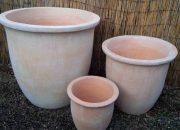Planting and Initial Care: Can You Plant Roses In A Pot

Can you plant roses in a pot – A fragile bloom, a whispered prayer, a rose’s life, a tender care. The earth awaits, a silent plea, to nurture life, for all to see. Planting a rose, a hopeful start, a fragile heart, a work of art.
Planting a rose, whether bare-root or from a nursery pot, requires a gentle hand and a mindful heart. Each step, a promise kept, a future bloomed, a memory swept across the wind.
Planting a Bare-Root Rose, Can you plant roses in a pot
The bare root, a skeletal frame, holds the promise of vibrant flame. Preparing the pot, a gentle task, to cradle life, no time to ask if it will thrive. The soil, a rich embrace, a nurturing space, for roots to trace their winding way.
- Select a pot of ample size, ensuring good drainage to prevent waterlogged roots, a slow, sad demise.
- Fill the pot with a well-draining potting mix, enriched with compost, a vital boost, to help it adjust.
- Soak the bare-root rose in water for a few hours, rehydrating the root system, before the planting system.
- Plant the rose at the same depth it grew previously, ensuring the graft union (the point where the rootstock and scion meet) is above the soil line. A buried union, a sad decline.
- Gently firm the soil around the roots, avoiding any air pockets, a potential threat, a heartbreak it begets.
- Water thoroughly, ensuring the soil is evenly moist, a hopeful beginning, not a silent ghost.
Planting a Rose from a Nursery Pot
From its nursery home, a gentle removal, a transition delicate, a story of renewal. Minimizing root disturbance is key, a tender touch, to help it be free to flourish and grow, to brightly show.
- Gently loosen the root ball, to avoid damage, a painful breakage.
- Carefully remove the rose from its nursery pot, ensuring the root ball remains intact, a delicate pact.
- Plant the rose at the same depth as it was previously growing, ensuring the soil level matches, a careful matching.
- Fill the pot with well-draining potting mix, gently firming the soil around the root ball, to prevent a fall.
- Water thoroughly, avoiding overwatering, a potential suffering, a slow withering.
Watering a Newly Planted Rose
Water, a lifeblood, a gentle stream, nurturing the dream, a tender gleam. Consistent moisture is crucial, but avoid overwatering, a potential scruple. Weather conditions dictate the watering schedule, a watchful eye, a nurturing needle.
Water deeply and less frequently, allowing the soil to dry slightly between waterings, a mindful balance, a tender dance. During hot and dry weather, increase watering frequency, a necessary measure, to prevent displeasure. During cooler and wetter weather, reduce watering frequency, a careful decree, to prevent disease.
Ongoing Care and Maintenance

A potted rose, a fragile heart in earthenware, demands a tender touch, a constant vigil against the cruel whims of nature. Its beauty, a fleeting bloom, is a melancholic reminder of time’s relentless passage. To nurture this ephemeral grace requires diligent care, a symphony of tending that echoes the fragile beauty of the flower itself.
The ongoing care of a potted rose is a dance between nurturing and observation, a delicate balance between providing and protecting. Each action, from feeding to pruning, must be performed with an understanding of the plant’s needs and vulnerabilities. Neglect can lead to a slow, heartbreaking decline, a withering mirroring the unspoken sorrows of a neglected heart.
Fertilizing Potted Roses
Regular feeding is crucial for sustaining the vibrant health and abundant blooms of your potted rose. Think of it as providing sustenance for a delicate soul, allowing it to express its beauty fully. Deprivation leads to pale blooms and weakened stems, a reflection of a spirit starved of nourishment. A carefully planned fertilizing schedule is essential.
During the growing season (spring and summer), feed your rose every two to four weeks with a balanced rose fertilizer, following the instructions on the package. A slow-release granular fertilizer can provide consistent nourishment, minimizing the frequency of applications. Avoid over-fertilizing, as this can burn the roots and lead to a decline in health, much like an overabundance of emotion can overwhelm and break a spirit.
Use a balanced rose fertilizer with a ratio such as 10-10-10 or a similar formulation.
Pruning Potted Roses
Pruning is a necessary act of shaping and rejuvenation, a way to guide the rose’s growth and encourage abundant blooms. It is a symbolic act of carefully removing what is hindering its potential, a process that mirrors the necessary trimming of excess baggage in our own lives. Improper pruning can lead to weakened growth and susceptibility to disease, a testament to the importance of careful tending.
- Deadheading: Regularly remove spent blooms to prevent the plant from putting energy into seed production instead of new flowers. This is a simple act of redirecting the rose’s energy, mirroring the need to let go of past hurts to embrace new beginnings.
- Winter Pruning: In late winter or early spring, before new growth begins, prune back canes to about one-third of their length. Remove any dead, diseased, or crossing canes. This act is one of renewal, of preparing the rose for a fresh start, just as we must shed the weight of the past to embrace the future.
- Light Pruning: Throughout the growing season, remove any dead or diseased leaves or stems as needed. This constant vigilance mirrors our own need to address issues promptly, before they escalate and cause further damage.
Rose Problems: Prevention and Treatment
Even with the most attentive care, potted roses can fall prey to pests and diseases. These unwelcome visitors are a stark reminder of life’s inherent fragility, a testament to the unpredictable nature of existence. Early detection and swift action are crucial in preventing widespread damage and saving your precious rose.
Common problems include aphids, spider mites, black spot, and powdery mildew. Regular inspection for signs of infestation or disease is essential. Prevention through proper watering, fertilizing, and air circulation is key. Treatment may involve insecticidal soap, neem oil, or fungicides, depending on the specific problem. Always follow the instructions on the product label carefully.
Yo, so you wanna grow roses? Totally doable in a pot, bro! Check out these sick black ceramic plant pots – they’d look fire with some vibrant roses. Just make sure your pot’s got enough drainage, and you’re good to go, planting those beauties.
Overwintering Potted Roses
The fading light of autumn casts a long shadow on the vibrant blooms, a poignant reminder that winter’s chill approaches. For the potted rose, a symbol of enduring beauty, this transition demands careful consideration, a tender act of preservation against the coming frost. Protecting your rose through the winter months is not merely a task, but an act of nurturing its fragile life, a silent promise of spring’s return.Protecting potted roses from winter’s harsh embrace requires a multifaceted approach, varying according to the severity of your local climate.
The goal is to shield the plant from freezing temperatures, excessive moisture, and the damaging effects of wind and harsh sun. The methods employed will depend on whether your winter is mild, moderate, or severe.
Winter Protection Methods Based on Climate
In mild climates, where temperatures rarely dip below freezing, a simple layer of mulch around the base of the rose, coupled with some wind protection (perhaps a burlap wrap), may suffice. In moderate climates, more substantial protection will be necessary. This might involve moving the pot to a sheltered location, such as a porch or against a south-facing wall.
For severe winters, where temperatures plummet well below freezing, moving the rose indoors or into an unheated but frost-free structure is often essential. Imagine the rose, a delicate dancer, seeking refuge from the winter’s icy grip.
Winter Watering Practices
The winter months bring a change in the rose’s water needs. The slower growth rate means less frequent watering is required. Overwatering can lead to root rot, a fatal condition for the winter-bound rose. Allow the soil to dry out somewhat between waterings, checking the moisture level by inserting your finger into the soil. The delicate balance between hydration and prevention of rot is a dance as intricate as the rose’s bloom.
Moving Potted Roses Indoors or to Sheltered Locations
Relocating your rose to a protected environment is crucial in colder climates. A cool, bright location, such as an unheated sunroom or a sheltered porch, is ideal. Avoid placing the rose near heating vents or radiators, which can dry out the air and damage the plant. The transition should be gradual to minimize shock, and the plant should be monitored closely for any signs of stress.
The rose, a creature of sunlight and warmth, seeks a gentler winter haven. The journey indoors, a quiet migration to a place of sanctuary.
FAQ Resource
What type of fertilizer is best for potted roses?
A balanced, slow-release rose fertilizer is ideal. Follow package instructions carefully.
How often should I water my potted roses?
Water deeply when the top inch of soil is dry, adjusting frequency based on weather and pot size.
Can I use tap water for my potted roses?
Generally yes, but letting it sit out for 24 hours to allow chlorine to dissipate is beneficial.
What are the signs of root rot in potted roses?
Yellowing leaves, wilting, and a foul odor from the soil are key indicators.
How do I protect my potted roses from pests?
Regularly inspect for pests, use insecticidal soap or neem oil as needed, and maintain good air circulation.












